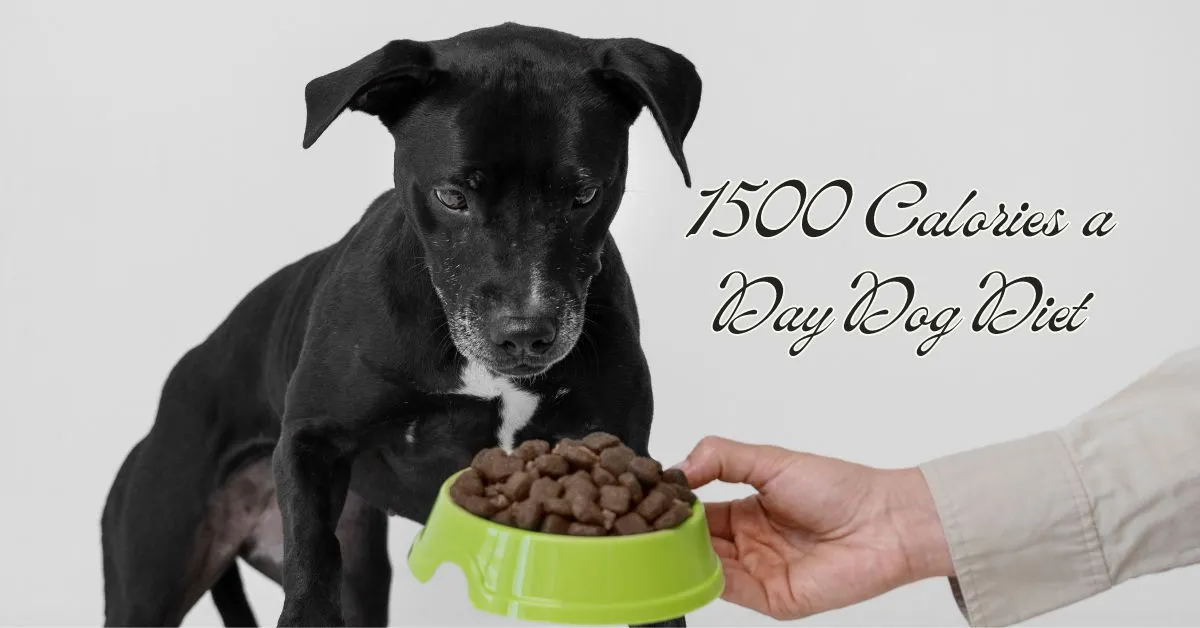1500 Calories a Day Dog Diet: First and foremost, understanding your dog’s nutritional needs is crucial for their health and well-being. A 1500-calorie-a-day diet can be an effective way to manage your dog’s weight, especially if they are overweight or have specific health conditions. Generally, dogs require a balanced diet that provides all essential nutrients without overfeeding them. So, what exactly is a 1500-calorie diet, and how can it benefit your dog?
Why Consider a 1500-Calorie Diet for Your Dog?
To begin with, a 1500-calorie diet may seem restrictive, but it is designed to ensure your dog receives the right amount of calories based on their size, breed, and activity level. Many veterinarians recommend this type of diet for dogs that need to lose weight or maintain a healthy weight. Importantly, maintaining a proper weight helps reduce the risk of several health problems such as diabetes, joint issues, and heart diseases. Thus, it’s a beneficial strategy to keep your furry friend in optimal health.
Assessing Your Dog’s Caloric Needs
Initially, you need to assess your dog’s caloric needs before starting any diet. This assessment includes factors such as age, weight, activity level, and breed. Large and active breeds typically need more calories, while smaller or less active breeds need fewer. Moreover, a senior dog may require fewer calories than a young, active dog. Therefore, consulting with a veterinarian can help you determine if a 1500-calorie diet is appropriate for your dog.
Structuring a 1500-Calorie Diet Plan
Next, structuring a diet plan is key to success. A 1500-calorie dog diet should be well-balanced, containing proteins, fats, carbohydrates, vitamins, and minerals. Proteins are essential for muscle development, while fats provide energy and support cell function. Additionally, carbohydrates are crucial for energy, and vitamins and minerals are necessary for overall health. To ensure a balanced diet, you might want to include:
- High-quality proteins: Chicken, turkey, beef, or fish.
- Healthy fats: Fish oil or flaxseed oil.
- Carbohydrates: Brown rice, sweet potatoes, or oats.
- Vegetables: Carrots, green beans, or spinach.
- Fruits: Apples, blueberries, or bananas (in moderation).
Preparing Meals at Home vs. Commercial Dog Foods
While some dog owners prefer preparing meals at home, others might opt for commercial dog foods. Preparing meals at home allows for better control over the ingredients and portion sizes, but it requires knowledge of dog nutrition. On the other hand, high-quality commercial dog foods are formulated to meet all nutritional requirements. If choosing commercial foods, always check the label for calorie content and ensure it aligns with your dog’s daily intake of 1500 calories.
Sample 1500-Calorie Diet Plan
To illustrate, here’s a sample diet plan for a day:
- Breakfast:
- 100 grams of boiled chicken breast (165 calories)
- 50 grams of cooked brown rice (55 calories)
- 30 grams of steamed green beans (10 calories)
- Lunch:
- 80 grams of turkey (150 calories)
- 40 grams of sweet potatoes (40 calories)
- 20 grams of steamed carrots (10 calories)
- Dinner:
- 120 grams of grilled fish (210 calories)
- 50 grams of oats (60 calories)
- 20 grams of spinach (10 calories)
- Snacks and Treats:
- A small apple slice (10 calories)
- 1 tablespoon of cottage cheese (10 calories)
- 1 dog biscuit (20 calories)
By following this plan, your dog can receive approximately 1500 calories per day.
Monitoring Your Dog’s Progress
Furthermore, it is important to monitor your dog’s progress regularly. This includes keeping an eye on their weight, energy levels, and overall health. Regular weigh-ins, at least once a week, can help track progress. Moreover, observe any changes in behavior or energy, as these could indicate that the diet needs adjustment. If your dog seems overly hungry, lethargic, or experiences digestive issues, consult with your veterinarian to adjust the diet plan accordingly.
Benefits of a 1500-Calorie Diet
Notably, a 1500-calorie diet offers several benefits for your dog. It can help with weight management, increase energy levels, improve joint health, and reduce the risk of obesity-related diseases. Additionally, it can lead to a longer, healthier life by preventing conditions that can develop due to overfeeding and poor nutrition.
Common Mistakes to Avoid
However, there are common mistakes dog owners make when transitioning to a 1500-calorie diet. These include overfeeding treats, not measuring portions correctly, and neglecting to balance the diet with all necessary nutrients. It’s also important to avoid human foods that are toxic to dogs, such as chocolate, onions, and grapes. Therefore, always follow the diet plan strictly and consult your vet regularly.
Conclusion
In conclusion, a 1500-calorie diet can be beneficial for many dogs, particularly those needing to lose weight or maintain a healthy weight. It’s essential to balance the diet with high-quality ingredients and monitor your dog’s progress regularly. With the right plan and supervision, a 1500-calorie diet can significantly improve your dog’s quality of life.
FAQs
How do I know if a 1500-calorie diet is right for my dog?
Consult your veterinarian to assess your dog’s specific caloric needs based on their size, age, breed, and activity level.
Can I feed my dog homemade meals on a 1500-calorie diet?
Yes, homemade meals allow better control over ingredients and portion sizes, but ensure they are nutritionally balanced.
Are there specific dog foods formulated for a 1500-calorie diet?
Some commercial dog foods provide calorie counts on their labels. Choose high-quality brands that meet your dog’s caloric needs.
What if my dog is still hungry on a 1500-calorie diet?
If your dog appears hungry, consult your veterinarian. They might need a slight increase in calories or a different feeding schedule.
How often should I monitor my dog’s weight on this diet?
Monitor your dog’s weight weekly to track progress and adjust the diet as necessary.

